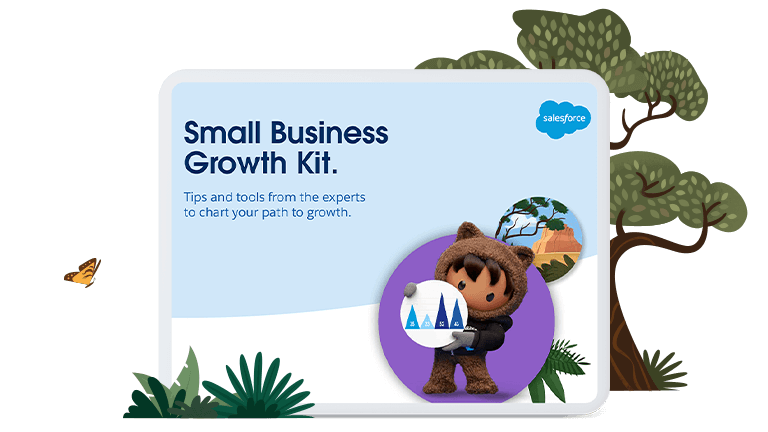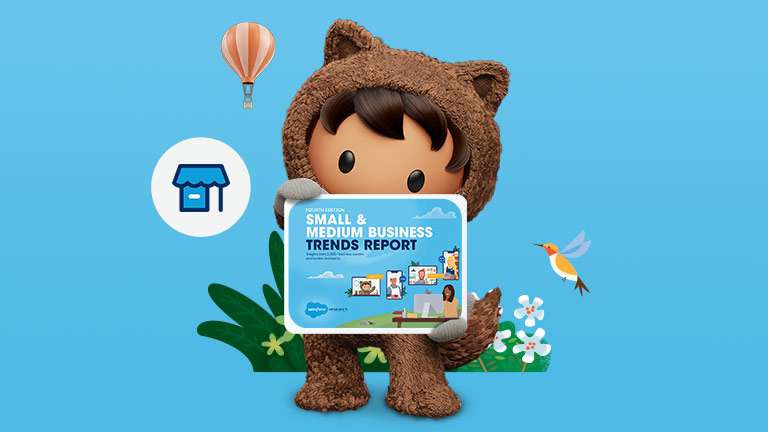The popular conception of the salesperson has changed. No longer do we imagine a Don Draper type, winning clients over during two-martini lunches with nothing more than a smile and a catchy slogan. Today’s salespeople need to be incredibly tuned in to the needs of their prospects. They have to know their product’s differentiator, demonstrate how it can solve a business’s unique needs and then back it up with data. They need to be able to deliver value, know their competition, tell a compelling story and be able to read the prospect, then pivot and adapt to any objections.
In other words, selling isn’t easy. But there are some ways you can make it easier – or at least improve your results. Let’s take a look at how today’s businesses can craft a sales strategy to put the customer first, build better relationships and close more deals.
Why do SMEs need a sales strategy?
A sales strategy is a blueprint for a successful sales process. A good strategy shouldn’t be set in stone, rather it should be flexible, so that it can be adapted to address the individual needs of the customer.
In short, a good sales strategy can help SMEs leverage their data, empower their customers, increase sales productivity and drive revenue.
Six pillars for crafting a successful sales strategy
Although a sales strategy should be flexible enough to accommodate different audiences, needs and channels, there are some core building blocks you’ll want to build your sales strategy around.
Here are 6 pillars to consider when crafting a sales strategy.
Your goals. When creating a sales strategy, you’re creating a roadmap, so you need to know where you’re going. Set clear goals for both the short and long term, and then choose the KPIs (Key Performance Indicators) that will best help measure your progress towards those goals.
Your team. Once you know where you want to go, you’ll want to look at how your teams’ skills can be used to get you there. Different routes to market will require different approaches – and different skill sets. If you spot any skills gaps in your organisation, you can use on-demand training platforms to train up your teams to better carry out your sales strategy.
Your differentiator. It’s been said that a good salesperson can sell anything to anyone, but the days of the hard sell are behind us. Today’s sales trends prioritise the building of win/win propositions, not transactional relationships. Look at your product or service, and then look at what differentiates it from your competitors’. Even better, look at how it can uniquely fulfil the needs of your customer and help them reach their goals. Combining your USP (Unique Selling Proposition) with the customer’s needs should be the cornerstone of your sales strategy.
Your customers. Different prospects and customers will respond to different messaging and engage on different channels. Just as importantly, they may value different aspects of your product or services. For instance, some of your prospects may prioritise a lower upfront price point, while others may be more interested in long-term ROI. A successful sales strategy is dependent on truly knowing your customers – and how you can deliver what they need.
Your story. You won’t always have time to tell the story of your brand, and your customer may not want to hear it. There’s a time and a place for everything, after all. But some businesses have stories that are so woven into their branding that they’ve become inseparable from their USP. Just look at TOMS’ charitable giving, or the story of the hearX Group, which started as a way to offer affordable hearing health products to low-income communities.
Your processes. Your sales process consists of how you’ll get from point A to point Z. Along the way, you’ll likely have smaller processes for how you’ll get things done. For instance, inbound and outbound selling might both be part of your sales process, but you’ll have separate processes for accomplishing each of them. You’ll want to look at how you can optimise your processes, both on a micro and macro level.
Five tips for a winning sales strategy
OK, so you have a firm grasp on your goals, team, USP, customer, story and processes. What’s next? Well, it’s time to put everything together and create a blueprint for your new sales strategy.
Here are a few tips for getting started.
Unlock the power of CRM. Personalisation is more important than it’s ever been, and many customers and prospects won’t engage with businesses that don’t treat them as an individual. By leveraging CRM systems, you can personalise engagement at scale, manage leads and get real-time insights.
Put the customer at the heart of everything. By putting the customer at the centre of your sales strategy, rather than your business’s objectives, you can truly become a more customer-centric organisation. This means providing a positive customer experience even after the sale, leading to better long-term relationships, higher CLV (Customer Lifetime Value) and better word of mouth.
Become more data driven. Chances are that your organisation is already using its data to deliver forecasts, identify market opportunities or analyse ROI, but are you using your customer’s data as well? One of the keys to a winning sales pitch is showing value to the customer, so delivering hard data insights that can back up your unique value to them is a great way to win their business.
Build trust. OK, if you’re a sales professional this might hurt a little, but a survey showed that less than 5% of respondents considered salespeople to be trustworthy. So even if you’re approaching prospects with the best of intentions, you have historical prejudice working against you. The good news? Trust can be a differentiator, as Salesforce research shows that 87% of sales reps say they act as trusted advisors to their customers.
Upgrade your toolkit. A salesperson’s silver tongue was once their most powerful tool, but today’s sales professional has a whole array of powerful technology to turbocharge productivity, connect with the customer, gain valuable insights and boost global sales. By giving your team members the right tools to succeed, you’ll not only make their jobs easier and drive employee retention, you can create a best-in-class sales team that can thrive from anywhere, at any time.
Ready to turn your sales strategy into done deals?
If you’ve created your new sales strategy, now all you have to do is create the perfect pitch. No sweat, right? Well, we have a few tips to make it easier. Just check out the SME Growth Kit, where you’ll not only find ways to increase revenue; you’ll find a pull-out guide for writing your winning sales pitch.






